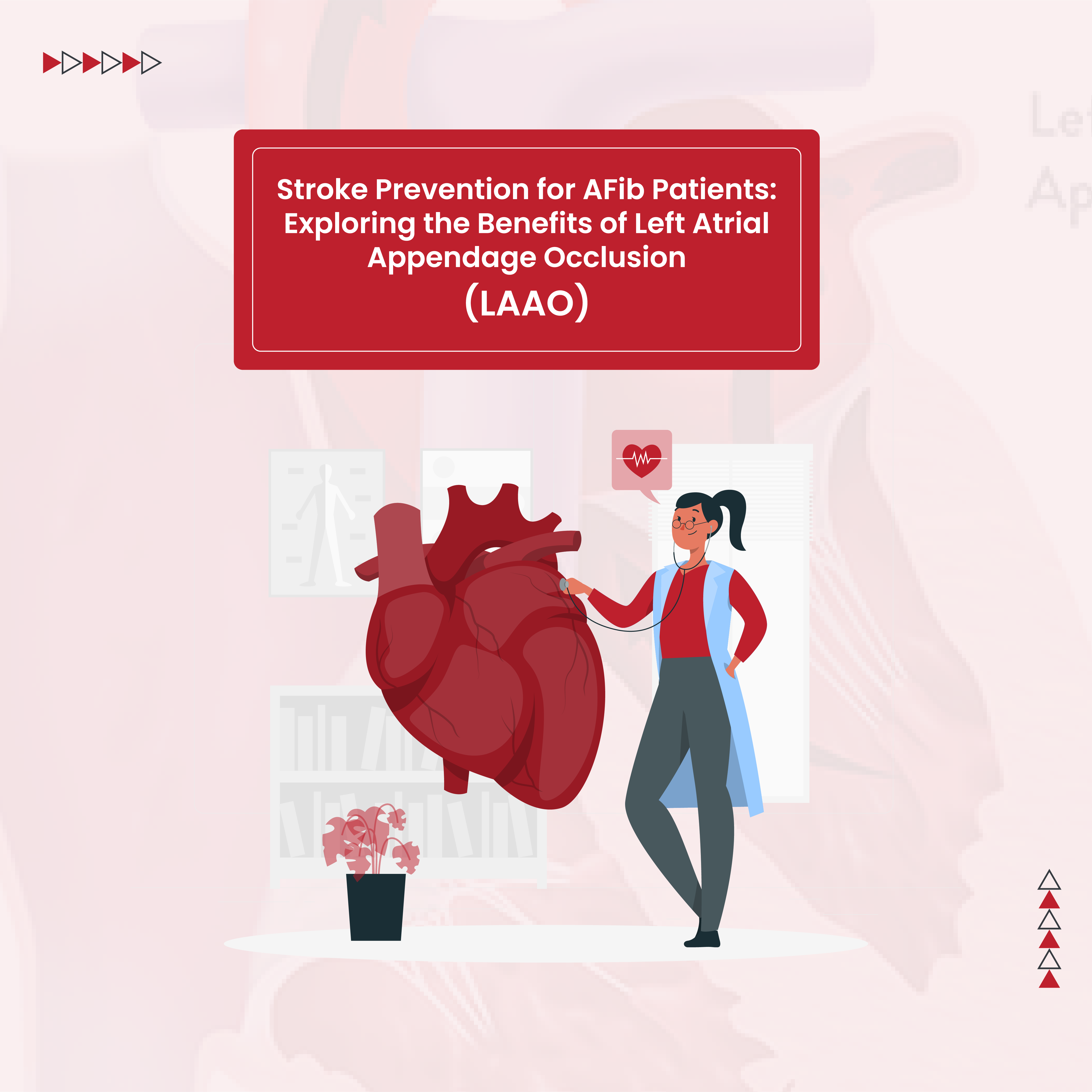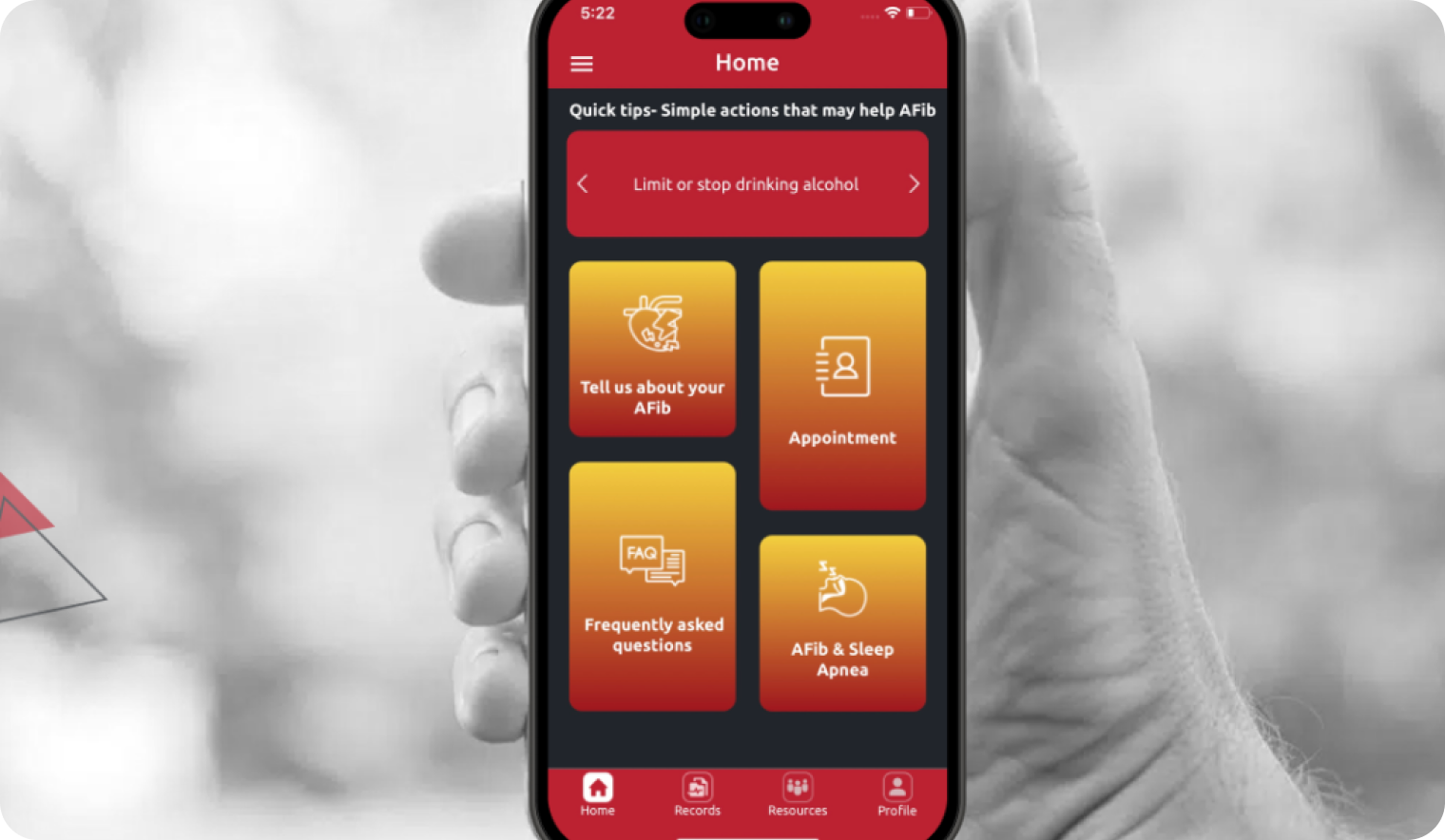Atrial fibrillation and atrial flutter are common abnormal heart rhythms (arrhythmias) which cause the upper chambers of the heart (atria) to beat too fast. The heart rhythm in atrial flutter is more regular and less chaotic than is seen with atrial fibrillation. Atrial fibrillation (AFib) is significantly more common than atrial flutter. These two arrhythmias can occur together or independently of one another. Atrial flutter, which is sometimes referred to as A flutter or aflutter, can occur in athletes but is uncommon in this population in the absence of other risk factors.
Atrial flutter symptoms can include palpitations (sensation of the heart a flutter), decreased exercise tolerance, shortness of breath, fatigue, chest pain and lightheadedness. Many of these symptoms are due to the elevated A flutter heart rate. As with atrial fibrillation, atrial flutter can cause blood clots to form in the heart which leads to a stroke. A flutter treatment focuses on managing the abnormal rhythm and decreasing risk of stroke, heart failure and other complications.

What is A Flutter?
Atrial flutter is a type of arrhythmia which is caused by abnormal electrical signals that originate in the atria. These rapid, regular electrical signals override the heart’s internal pacemaker and cause the heart to beat too fast, often 100 to 150 beats per minute. Atrial flutter diagnosis is made with a cardiac rhythm monitor such as an electrocardiogram (EKG).
There are 2 types of atrial flutter, typical atrial flutter and atypical atrial flutter. Typical atrial flutter originates in the right upper heart chamber. Atypical flutter can come from either the left or right atria. In both typical and atypical atrial flutter, an abnormal electrical circuit causes the repeated, rapid beating of the atria. The electrical circuit creates its own circular pattern of stimulation. This means that once atrial flutter gets started, it often continues until something interrupts the electrical circuit. Electrical cardioversion, medications, or an ablation procedure can be used to revert the heart to sinus rhythm. Catheter ablation is a minimally-invasive procedure which creates scar lines in the heart to interrupt abnormal electrical signals. It has a high cure rate for atrial flutter and is often recommended as a first-line treatment option for typical atrial flutter.
Causes of atrial flutter?
A variety of conditions can predispose a person to developing atrial flutter. Causes of atrial flutter include:
- Risk factors for atrial flutter are the same as atrial fibrillation and can include obesity, sleep apnea, thyroid problems, high blood pressure, advancing age, heart failure, lung disease and structural heart disease.
- Atrial flutter can occur after the initiation of certain medications used for atrial fibrillation. For example, a person with atrial fibrillation may get started on a medication to help convert the heart rhythm from atrial fibrillation to a normal rhythm (antiarrhythmic medication). In some cases, the antiarrhythmic medication may not convert the heart to a normal rhythm (sinus rhythm) but does help to organize the atrial fibrillation to become atrial flutter.
- Atrial flutter can develop after an atrial fibrillation ablation. This can be due to abnormal electrical circuits created by atrial fibrillation ablation scar tissue. When this happens, A flutter treatment with a flutter ablation can effectively eliminate the flutter circuit.
- Atrial flutter and atrial fibrillation are common arrhythmias which can occur after heart surgery. Twenty to 50% of patients who undergo heart surgery, such as a valve replacement or coronary artery bypass graft surgery, will have atrial flutter or atrial fibrillation postoperatively.
- On rare occasions, atrial flutter can occur after a heart attack.
Complications of atrial flutter
The most common complications of atrial flutter are heart failure and stroke. Atrial flutter can cause the heart to beat too rapidly. If the heart rate is uncontrolled over a prolonged period of time it can cause heart failure (tachycardia-mediated cardiomyopathy). Your pulse is determined by how many times the bottom chambers of your heart (ventricles) beats per minute. In atrial flutter, the atrial rate is often 2 times as fast as the ventricular rate. This means that if your pulse in atrial flutter is 150 bpm your atria are actually beating 300 times per minute. This very rapid atrial rate increases the risk of blood pooling in the sac-like structure which protrudes off the left upper heart chamber (left atrial appendage). The pooled blood is more likely to form a clot which can break off and cause a stroke.
Some people with atrial flutter do not have any symptoms. However, many people have significant symptoms which interfere with their ability to do the activities they enjoy and this affects quality of life. Adequate treatment of atrial flutter is therefore important not just to reduce risk of stroke, heart failure, or other complications but also to improve daily quality of life.
There are 4 treatment goals for atrial flutter:
- Control the heart rate: Rate control is attempted using medications such as beta-blockers, calcium channel blockers, or less frequently, digoxin. While these medications can be very effective in rate control of atrial fibrillation they are often less effective with atrial flutter.
- Reversion to sinus rhythm: When a person is first diagnosed with atrial flutter it is important to identify and treat any reversible causes such as sleep apnea, thyroid problems and obesity.
Medications, electrical cardioversion or ablation can all be used to restore sinus rhythm. Atrial flutter catheter ablation is safe, well-tolerated, and has a very high cure rate. Radiofrequency ablation is especially effective for typical atrial flutter. Because of the high cure rate, ablation is usually preferred over antiarrhythmic medications, which can have a number of undesirable side effects.
- Maintenance of sinus rhythm: Without treatment, atrial flutter has a high recurrence rate. Data has shown a 50% recurrence rate of atrial flutter which was treated with electrical cardioversion without the addition of antiarrhythmic medications. However, as stated above, antiarrhythmic medications are associated with a number of potential side effects and atrial flutter ablation has a very high success rate. Therefore, atrial flutter ablation is often recommended as part of a definitive treatment plan for atrial flutter. Antiarrhythmic medications may be reserved for people for whom ablation was not successful or is not an option.
- Prevent blood clots and reduce the risk of stroke: Blood thinner medication (anticoagulation) or procedures are used to decrease the risk of blood clots. Atrial flutter is thought to have less stroke risk than atrial fibrillation. However, it is difficult to truly determine atrial flutter stroke risk because atrial flutter and atrial fibrillation often occur together. Therefore, the approach to anticoagulation is generally the same whether you have atrial fibrillation or atrial flutter. With AFib or A flutter, a person’s risk of blood clots and subsequent stroke is determined by the CHA2DS2-VASc score. This risk calculator gives points for age, gender and presence of certain diseases.
C: Congestive heart failure – 1 point
H: High blood pressure (hypertension) – 1 point
A: Age greater than 75 years – 2 points
D: Diabetes mellitus – 1 point
S: History of stroke, transient ischemic attack or blood clots – 2 points
V: Vascular disease (i.e. heart attack, peripheral or coronary artery disease) – 1 point
A: Age 65-74 years – 1 point
Sc: Female – 1 point
Anticoagulation is recommended for men with a score of 2 or greater and for women with a score of 3 or greater. Because of the high cure rate of atrial flutter ablation, anticoagulation can generally be discontinued 4 weeks after atrial flutter ablation if there has been no recurrence of arrhythmia. However, if a person also has a history of atrial fibrillation, anticoagulation should be continued regardless of atrial flutter ablation success.
Is atrial flutter regular?
Atrial flutter usually results in a regular heart rhythm. Atrial flutter occurs when the atria beat too rapidly, which overrides the heart’s natural pacemaker (the sinus node). Luckily, the heart has a backup pacemaker called the AV node. The AV node acts as a gatekeeper between the upper chambers (atria) and lower chambers (ventricles) of the heart. In atrial flutter, the AV node filters out some of the frequent atrial impulses it receives. It is common for the AV node to only allow every other atrial beat to conduct to the ventricles. In this example, atrial flutter will occur in a pattern of 2 atrial beats for every 1 ventricular beat (2:1). Sometimes the AV node allows fewer atrial impulses through and atrial flutter may occur in other patterns such as 3 atrial beats to 1 ventricular beat (3:1) or 4 atrial beats to 1 ventricular beat (4:1). The AV node is usually quite regular in its filtering of the atrial beats it allows to conduct to the ventricles. This is why atrial flutter typically results in a regular heart rhythm and why a person who is in atrial flutter often reports a regular pulse.
The most dangerous form of atrial flutter is when the AV node allows every atrial impulse to conduct to the ventricles and there is 1 ventricular beat for every 1 atrial beat (1:1). The typical atrial rate in atrial flutter is 240 to 300 beats per minute. Therefore, if a person develops 1:1 atrial flutter the heart rate would be 240 to 300 beats per minute. This is not a sustainable heart rate and can lead to other, more dangerous abnormal heart rhythms. 1:1 atrial flutter has been noted to occur rarely amongst people taking certain antiarrhythmic medications, such as flecainide or propafenone. Fortunately this is very uncommon and is usually prevented by also prescribing a rate controlling medication like beta-blocker or calcium channel blocker.
Can atrial flutter go away by itself?
Sometimes atrial flutter can go away on its own. However, even when it does go away spontaneously there is a high risk of recurrence. Therefore, your doctor may recommend certain treatments which may include medications and/or procedures. One of the most important parts of an effective atrial flutter treatment plan is to treat any underlying risk factors which are contributing to the arrhythmia. Most risk factors for atrial fibrillation or atrial flutter are what we call modifiable risk factors. The notable exceptions are age, gender and genetics.
Modifiable risk factors
- Obesity: In obese and overweight individuals, losing 10% body weight has been associated with a significant decrease in atrial fibrillation and atrial flutter. Maintaining weight loss over time
- Sleep apnea: Sleep apnea is a very common risk factor for the development of atrial fibrillation and atrial flutter. In fact, one study 80% of people who were referred for atrial fibrillation ablation had evidence of sleep apnea. If you had sleep apnea, it is very important that it is adequately treated. Treating sleep apnea makes atrial fibrillation and atrial flutter recurrence less likely and also makes treatments more effective.
- Diabetes mellitus: Type 2 diabetes mellitus is often associated with overweight and obesity. An elevated hemoglobin A1c is also associated with higher levels of inflammation. Overweight, obesity and systemic inflammation are all risk factors for atrial fibrillation and atrial flutter.
- High blood pressure: Over time, chronically elevated blood pressure causes structural changes to the heart. These structural changes create the substrate which increases the likelihood of development of atrial fibrillation and atrial flutter.
- Excessive alcohol intake: Alcohol, especially in the form of chronic excessive alcohol intake or binge drinking, increases the risk of atrial fibrillation or atrial flutter. A study of people with atrial fibrillation who engaged in moderate alcohol intake versus those who abstained showed that the people who abstained from alcohol were 20% less likely to have recurrence of atrial fibrillation. In addition, they had significantly more mild AFib symptoms and were less likely to be hospitalized as a result of their atrial fibrillation.
- Thyroid problems: Hyperthyroidism, or having too much thyroid hormone, is irritating to the heart’s electrical system and can trigger atrial flutter.
- Smoking: Smoking increases systemic inflammation, causes lung disease, and leads to structural changes in the heart which all increase the risk of atrial fibrillation and atrial flutter.
- High cholesterol: Elevated cholesterol is associated with an increased incidence of atrial fibrillation and atrial flutter. It is recommended that people with atrial flutter have an LDL cholesterol of less than or equal to 100 mg/dL.
- Exercise: A sedentary lifestyle and is associated with greater incidence of obesity, sleep apnea, diabetes, heart disease and high blood pressure which increase the risk of atrial fibrillation or atrial flutter. However, moderate-intensity exercise has numerous health benefits including stress management, decreased systemic inflammation, and improved cardiovascular fitness which all have positive effects on atrial fibrillation and atrial flutter. A large atrial fibrillation study found excellent results with 30 minutes of moderate-intensity exercise 3-4 times per week. In this study, the exercise goal was to increase the type and duration of exercise for a total of 250 minutes/week.
Can atrial fibrillation and atrial flutter occur in athletes?
Atrial fibrillation and atrial flutter can occur in athletes. In fact some studies have shown an increased incidence of atrial fibrillation amongst high intensity, competitive endurance athletes. In general however, athletes have improved cardiovascular fitness and less obesity, high blood pressure, diabetes, and sleep apnea. All of these have a positive effect on decreasing an athlete’s risk of developing atrial fibrillation and atrial flutter.








